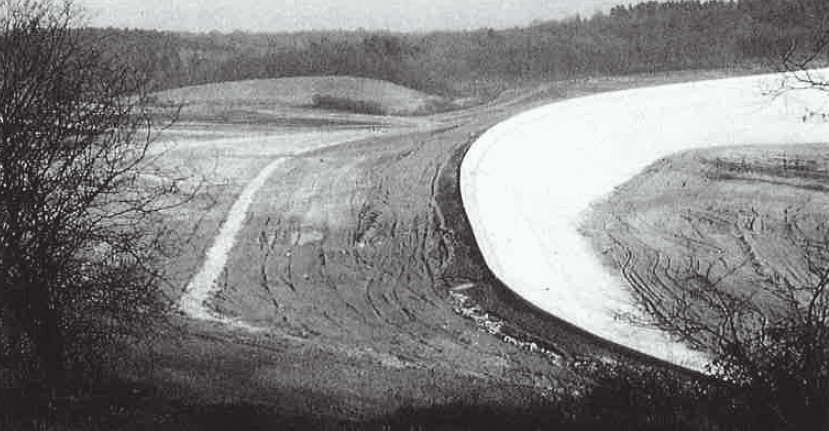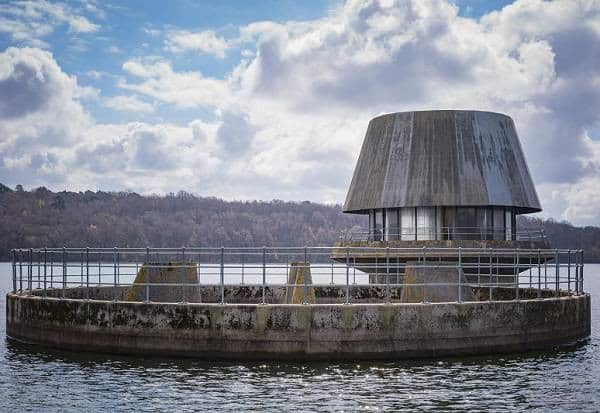It was as early as 1946 that the idea was conceived to build a reservoir to serve the Medway towns along with other parts of Kent and East Sussex. However it wasn’t until the 1960s that plans for this new source of drinking water began to gather pace and attention came to rest on the Bewl Valley between Lamberhurst and Ticehurst.
In the years immediately following the Second World War it was realised that the growing population in the South East of England would not be able to rely on traditional underground supplies of water forever. Instead it was decided that harnessing and storing surface water for times of need would be an invaluable investment for the future. Architects, planners and engineers wanted somewhere close enough to the target area to be practical yet at the same time avoid large-scale disruption.
The Bewl Valley seemed to be the perfect choice as it would not affect any major road or rail lines and there were very few people living in the immediate vicinity that would be affected. Furthermore, two major materials necessary for building the dam were available locally. These were clay, ideal for retaining water, and sandstone, both of which could be dug out of the ground nearby thus saving the cost of importing them.
The Queen gave Royal Assent to what was known as the Medway Water Act on 26th July 1968. This was the green light for work at Bewl and the project began in 1973.
A 900 metre long dam was constructed across the valley from clay excavated from the ground. This was strengthened with blocks of sandstone. The bank of the dam was covered in twelve inches of gravel underneath a layer of five inch concrete slabs to protect it from erosion. Pipes were built underneath the dam to enable the river Bewl to continue flowing.
Two large concrete towers were installed. The taller of the two was designed to draw off water when needed. The other was the overflow which was built to prevent the reservoir from getting too full.
The project was completed by the end of 1975 and when full, Bewl Water can hold up to 31 million litres of water and covers about 770 acres of land.
In 2004 work was completed on a pipeline connecting Bewl Water with Darwell Reservoir near Robertsbridge. At a cost of £25 million the 17km long stretch of piping was installed to help resupply this area of East Sussex during times of drought.
The Bewl Water site was acquired by Markerstudy Group at the end of 2015 and reopened officially in March 2016. Since then, Bewl Water is now part of the Elite Leisure Collection group, an umbrella company of Markerstudy with sister brands including One Warwick Park Hotel and Salomons Estate.
Over the years, Bewl Water has flourished as a sanctuary for both wildlife and visitors, offering a variety of outdoor activities and events for families and watersports enthusiasts.
Thanks to ongoing conservation efforts led by the team of dedicated Rangers—who work closely with The Woodland Trust and Sussex Wildlife Trust—this unique landscape continues to thrive. Habitat restoration and other projects play a crucial role in protecting the local ecosystem, ensuring Bewl Water remains a special place for generations to come.
Visitors can support these efforts by becoming a Friend of Bewl Water—a membership introduced in 2025 that helps safeguard landscapes and wildlife. As a member, visitors will enjoy exclusive discounts and perks while directly contributing to the preservation of this cherished natural space.



